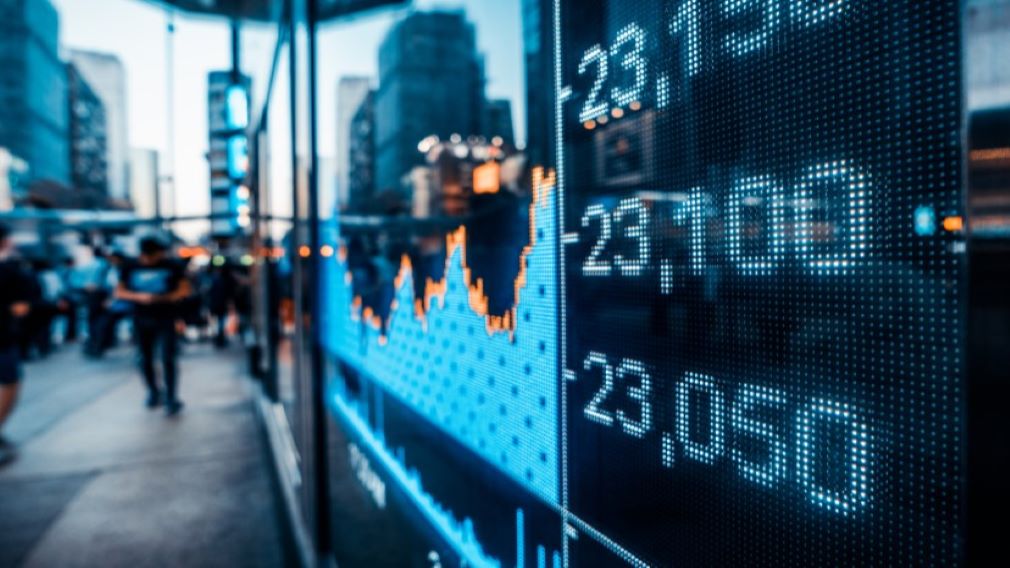15:46 December 07 2022
Share article
An economy in transition, impacts of high inflation and higher interest rates becoming apparent. Q3 domestic demand: 0.6%qtr, 6.9% yr. Q3 real GDP: 0.6%qtr, 5.9% yr.
Read full report
The Australian economy expanded by 0.6% in the September quarter for annual growth of 5.9%.
That is slightly lower than we had anticipated (0.8%) with one outstanding drag (-0.2 ppt’s) coming from the real estate sector in the form of Ownership Transfer Costs (turnover) that plunged by 11.2%.
Household spending growth slowed in the quarter from 2.1% in the June quarter, to 1.1%, although it did contribute all the 0.6ppt’s overall growth. Motor vehicles sales and operations (0.4 ppt’s); hotels, cafés and restaurants (0.4 ppt’s); and transport services (0.3 ppt’s) contributed most of the 1.1 ppt growth in household consumption. While not as strong as in the June quarter, the reopening up effect was once again apparent as a key driver of consumer spending.
Part of this lift in spending was funded by a further fall in the household savings rate from 8.3% in June to 6.9% in September, although the major fall from 19.4% in September 2021 has largely worked its way through.
Prospects for growth in consumer spending are easing as the reopening effect fades and the savings rate settles back at a more normal level. However, given the accumulated $260 billion in excess household savings it is likely that the savings rate will fall below equilibrium as households draw on these excess balances.
Consumer spending was also boosted by household incomes.
Compensation of employees rose 3.2% (including 2.7% in wages and salaries) in the quarter up from growth in the June quarter of 2.5% (2.2% in wages and salaries).
However, households were challenged by a sharp increase in prices, the consumption deflator rising by 2.0%, up from 1.6% in the June quarter, and the fastest increase since the introduction of the GST.
The weakness in housing activity was not only apparent in property turnover but a 2.2% decline in renovation work which was offset by a 3.4% increase in home building activity. The pipeline from the Home Builder subsidies is holding up for the time being.
Business investment was generally lack lustre (up 0.7%) with a 3.0% fall in machinery and equipment being offset by a 4.3% increase in non residential construction.
There are some clear themes in these accounts.
Household spending, boosted by a falling savings rate, continues to be the driver of growth largely through the reopening lift from travel; accommodation and hospitality; and motor vehicle purchases.
Some specific drag is apparent in the weak real estate market.
As we move forward, the reopening effect will fade; property weakness will linger; the savings rate will find a floor; and consumer spending growth will continue to slow.
But price and wage pressures are building, and it is these contrasting forces that will challenge policy.
At its meeting in December the Reserve Bank Board lifted the cash rate by 25 basis points and indicated that it expects to increase the rate further.
The effect of higher rates is apparent in the accounts, in housing and property turnover as well as in some components of consumption – food; household furnishings and equipment; and recreation all contracted in the quarter. These trends can be expected to accentuate through 2023, although data from our Westpac Card Tracker Index suggests that after a difficult October spending bounced back in November associated with the Black Friday sales.
The reason behind the RBA Board’s commitment to even higher rates can be clearly seen in the wages and prices series in the national accounts. Policy will need to be vigilant to avoid a wage/price spiral and while spending will slow further in 2023, the Board’s first obligation must be to return inflation to its target range over time.
It is for that reason that we expect the cash rate will need to lift to 3.85% from the current 3.1% during the first half of 2023 before going on hold in the second half as the pace of the spending slowdown intensifies.
Bill Evans, Chief Economist
Click on above PDF link for full report
Related articles
December 03 2025
•
December 03 2025
•
November 28 2025
•
20
{"topicSelector":[{"tagId":"westpaciq:topics/aud","name":"aud","description":"","title":"AUD","url":"/topic.aud"},{"tagId":"westpaciq:topics/interestrates","name":"interestrates","description":"","title":"Interest rates","url":"/topic.interestrates"},{"tagId":"westpaciq:topics/usd","name":"usd","description":"","title":"USD","url":"/topic.usd"},{"tagId":"westpaciq:topics/nzd","name":"nzd","description":"","title":"NZD","url":"/topic.nzd"},{"tagId":"westpaciq:topics/australia","name":"australia","description":"","title":"Australia","url":"/topic.australia"},{"tagId":"westpaciq:topics/newzealand","name":"newzealand","description":"","title":"New Zealand","url":"/topic.newzealand"},{"tagId":"westpaciq:topics/rates","name":"rates","description":"","title":"Rates","url":"/topic.rates"},{"tagId":"westpaciq:topics/credit","name":"credit","description":"","title":"Credit","url":"/topic.credit"},{"tagId":"westpaciq:topics/rba","name":"rba","description":"","title":"RBA","url":"/topic.rba"},{"tagId":"westpaciq:topics/commodities","name":"commodities","description":"","title":"Commodities","url":"/topic.commodities"},{"tagId":"westpaciq:topics/acgb","name":"acgb","description":"","title":"ACGB","url":"/topic.acgb"},{"tagId":"westpaciq:topics/inflation","name":"inflation","description":"","title":"Inflation","url":"/topic.inflation"},{"tagId":"westpaciq:topics/ustreasury","name":"ustreasury","description":"","title":"US Treasury UST","url":"/topic.ustreasury"},{"tagId":"westpaciq:topics/jpy","name":"jpy","title":"JPY","url":"/topic.jpy"},{"tagId":"westpaciq:topics/rbnz","name":"rbnz","description":"","title":"RBNZ","url":"/topic.rbnz"},{"tagId":"westpaciq:topics/abs","name":"abs","description":"","title":"ABS","url":"/topic.abs"},{"tagId":"westpaciq:topics/yieldcurve","name":"yieldcurve","description":"","title":"Yield curve","url":"/topic.yieldcurve"},{"tagId":"westpaciq:topics/us","name":"us","description":"","title":"US","url":"/topic.us"},{"tagId":"westpaciq:topics/eur","name":"eur","description":"","title":"EUR","url":"/topic.eur"},{"tagId":"westpaciq:topics/fx","name":"fx","description":"","title":"FX","url":"/topic.fx"},{"tagId":"westpaciq:topics/ois","name":"ois","description":"","title":"OIS","url":"/topic.ois"},{"tagId":"westpaciq:topics/gbp","name":"gbp","description":"","title":"GBP","url":"/topic.gbp"},{"tagId":"westpaciq:topics/semigovernment","name":"semigovernment","description":"","title":"Semi government","url":"/topic.semigovernment"},{"tagId":"westpaciq:topics/fomc","name":"fomc","description":"","title":"Federal Reserve FOMC","url":"/topic.fomc"},{"tagId":"westpaciq:topics/podcast","name":"podcast","description":"","title":"Podcast","url":"/topic.podcast"},{"tagId":"westpaciq:topics/basis","name":"basis","description":"","title":"Basis","url":"/topic.basis"},{"tagId":"westpaciq:topics/whatspricedin","name":"whatspricedin","description":"","title":"What\u0027s priced in","url":"/topic.whatspricedin"},{"tagId":"westpaciq:topics/europe","name":"europe","description":"","title":"Europe","url":"/topic.europe"},{"tagId":"westpaciq:topics/forecasts","name":"forecasts","description":"","title":"Forecasts","url":"/topic.forecasts"},{"tagId":"westpaciq:topics/nz","name":"nz","description":"","title":"NZ","url":"/topic.nz"},{"tagId":"westpaciq:topics/bonds","name":"bonds","description":"","title":"Bonds","url":"/topic.bonds"},{"tagId":"westpaciq:topics/macro","name":"macro","description":"","title":"Macro","url":"/topic.macro"},{"tagId":"westpaciq:topics/uk","name":"uk","description":"","title":"UK","url":"/topic.uk"},{"tagId":"westpaciq:topics/china","name":"china","description":"","title":"China","url":"/topic.china"},{"tagId":"westpaciq:topics/ecb","name":"ecb","description":"","title":"European central bank ECB","url":"/topic.ecb"},{"tagId":"westpaciq:topics/housing","name":"housing","description":"","title":"Housing","url":"/topic.housing"},{"tagId":"westpaciq:topics/crossmarket","name":"crossmarket","description":"","title":"Cross market","url":"/topic.crossmarket"},{"tagId":"westpaciq:topics/crosscurrencyxccy","name":"crosscurrencyxccy","description":"","title":"Cross currency XCCY","url":"/topic.crosscurrencyxccy"},{"tagId":"westpaciq:topics/morningreport","name":"morningreport","description":"","title":"Morning Report","url":"/topic.morningreport"},{"tagId":"westpaciq:topics/bbsw","name":"bbsw","description":"","title":"BBSW","url":"/topic.bbsw"},{"tagId":"westpaciq:topics/consumer","name":"consumer","description":"","title":"Consumer","url":"/topic.consumer"},{"tagId":"westpaciq:topics/currencies","name":"currencies","description":"","title":"Currencies","url":"/topic.currencies"},{"tagId":"westpaciq:topics/chartpacks","name":"chartpacks","description":"","title":"Chart packs","url":"/topic.chartpacks"},{"tagId":"westpaciq:topics/ironore","name":"ironore","description":"","title":"Iron ore","url":"/topic.ironore"},{"tagId":"westpaciq:topics/employment","name":"employment","description":"","title":"Employment","url":"/topic.employment"},{"tagId":"westpaciq:topics/retail","name":"retail","description":"","title":"Retail","url":"/topic.retail"},{"tagId":"westpaciq:topics/westpacwrap","name":"westpacwrap","description":"","title":"Westpac Wrap","url":"/topic.westpacwrap"},{"tagId":"westpaciq:topics/gdp","name":"gdp","description":"","title":"GDP","url":"/topic.gdp"},{"tagId":"westpaciq:topics/boj","name":"boj","description":"","title":"BOJ","url":"/topic.boj"},{"tagId":"westpaciq:topics/labour","name":"labour","description":"","title":"Labour","url":"/topic.labour"},{"tagId":"westpaciq:topics/asia","name":"asia","description":"","title":"Asia","url":"/topic.asia"},{"tagId":"westpaciq:topics/boe","name":"boe","description":"","title":"BOE","url":"/topic.boe"},{"tagId":"westpaciq:topics/securitisation","name":"securitisation","description":"","title":"Securitisation","url":"/topic.securitisation"},{"tagId":"westpaciq:topics/rmbs","name":"rmbs","description":"","title":"RMBS","url":"/topic.rmbs"},{"tagId":"westpaciq:topics/cmbs","name":"cmbs","description":"","title":"CMBS","url":"/topic.cmbs"},{"tagId":"westpaciq:topics/antipodeandaily","name":"antipodeandaily","description":"","title":"Antipodean Daily","url":"/topic.antipodeandaily"},{"tagId":"westpaciq:topics/consumersentiment","name":"consumersentiment","description":"","title":"Consumer Sentiment","url":"/topic.consumersentiment"},{"tagId":"westpaciq:topics/japan","name":"japan","description":"","title":"Japan","url":"/topic.japan"},{"tagId":"westpaciq:topics/houseprices","name":"houseprices","description":"","title":"House prices","url":"/topic.houseprices"},{"tagId":"westpaciq:topics/cliffnotes","name":"cliffnotes","description":"","title":"Cliff notes","url":"/topic.cliffnotes"},{"tagId":"westpaciq:topics/wages","name":"wages","description":"","title":"Wages","url":"/topic.wages"},{"tagId":"westpaciq:topics/trade","name":"trade","description":"","title":"Trade","url":"/topic.trade"},{"tagId":"westpaciq:topics/construction","name":"construction","description":"","title":"Construction","url":"/topic.construction"},{"tagId":"westpaciq:topics/fiscalpolicy","name":"fiscalpolicy","description":"","title":"Fiscal policy","url":"/topic.fiscalpolicy"},{"tagId":"westpaciq:topics/businessconditions","name":"businessconditions","description":"","title":"Business conditions","url":"/topic.businessconditions"},{"tagId":"westpaciq:topics/pboc","name":"pboc","description":"","title":"PBOC","url":"/topic.pboc"},{"tagId":"westpaciq:topics/billevans","name":"billevans","description":"","title":"Bill Evans","url":"/topic.billevans"},{"tagId":"westpaciq:topics/cny","name":"cny","description":"","title":"CNY","url":"/topic.cny"},{"tagId":"westpaciq:topics/canada","name":"canada","description":"","title":"Canada","url":"/topic.canada"},{"tagId":"westpaciq:topics/property","name":"property","description":"","title":"Property","url":"/topic.property"},{"tagId":"westpaciq:topics/esg","name":"esg","description":"","title":"ESG","url":"/topic.esg"},{"tagId":"westpaciq:topics/dairy","name":"dairy","description":"","title":"Dairy","url":"/topic.dairy"},{"tagId":"westpaciq:topics/coal","name":"coal","description":"","title":"Coal","url":"/topic.coal"},{"tagId":"westpaciq:topics/cad","name":"cad","description":"","title":"CAD","url":"/topic.cad"},{"tagId":"westpaciq:topics/oil","name":"oil","title":"Oil","url":"/topic.oil"},{"tagId":"westpaciq:topics/government","name":"government","description":"","title":"Government","url":"/topic.government"},{"tagId":"westpaciq:topics/energy","name":"energy","description":"","title":"Energy","url":"/topic.energy"},{"tagId":"westpaciq:topics/agriculture","name":"agriculture","description":"","title":"Agriculture","url":"/topic.agriculture"},{"tagId":"westpaciq:topics/cardtracker","name":"cardtracker","description":"","title":"Card Tracker","url":"/topic.cardtracker"},{"tagId":"westpaciq:topics/federalbudget","name":"federalbudget","description":"","title":"Federal Budget","url":"/topic.federalbudget"},{"tagId":"westpaciq:topics/model","name":"model","description":"","title":"Model","url":"/topic.model"},{"tagId":"westpaciq:topics/nsw","name":"nsw","description":"","title":"NSW","url":"/topic.nsw"},{"tagId":"westpaciq:topics/confidence","name":"confidence","description":"","title":"Confidence","url":"/topic.confidence"},{"tagId":"westpaciq:topics/vic","name":"vic","description":"","title":"VIC","url":"/topic.vic"},{"tagId":"westpaciq:topics/wa","name":"wa","description":"","title":"WA","url":"/topic.wa"},{"tagId":"westpaciq:topics/G10","name":"G10","description":"","title":"G10","url":"/topic.G10"},{"tagId":"westpaciq:topics/qld","name":"qld","description":"","title":"QLD","url":"/topic.qld"},{"tagId":"westpaciq:topics/sa","name":"sa","description":"","title":"SA","url":"/topic.sa"},{"tagId":"westpaciq:topics/tas","name":"tas","description":"","title":"TAS","url":"/topic.tas"},{"tagId":"westpaciq:topics/manufacturing","name":"manufacturing","description":"","title":"Manufacturing","url":"/topic.manufacturing"},{"tagId":"westpaciq:topics/data","name":"data","description":"","title":"Data","url":"/topic.data"},{"tagId":"westpaciq:topics/marketoutlook","name":"marketoutlook","description":"","title":"Market Outlook","url":"/topic.marketoutlook"},{"tagId":"westpaciq:topics/carbonpricing","name":"carbonpricing","description":"","title":"Carbon pricing","url":"/topic.carbonpricing"},{"tagId":"westpaciq:topics/lng","name":"lng","description":"","title":"LNG","url":"/topic.lng"},{"tagId":"westpaciq:topics/fairvalue","name":"fairvalue","description":"","title":"Fair value","url":"/topic.fairvalue"},{"tagId":"westpaciq:topics/dwellingapprovals","name":"dwellingapprovals","description":"","title":"Dwelling approvals","url":"/topic.dwellingapprovals"},{"tagId":"westpaciq:topics/sustainablefinance","name":"sustainablefinance","description":"","title":"Sustainable finance","url":"/topic.sustainablefinance"},{"tagId":"westpaciq:topics/august2025reporting","name":"august2025reporting","description":"","title":"August 2025 reporting","url":"/topic.august2025reporting"},{"tagId":"westpaciq:topics/nt","name":"nt","description":"","title":"NT","url":"/topic.nt"},{"tagId":"westpaciq:topics/economiccalendar","name":"economiccalendar","description":"","title":"Economic Calendar","url":"/topic.economiccalendar"},{"tagId":"westpaciq:topics/leadingindex","name":"leadingindex","description":"","title":"Leading Index","url":"/topic.leadingindex"},{"tagId":"westpaciq:topics/luciellis","name":"luciellis","description":"","title":"Luci Ellis","url":"/topic.luciellis"},{"tagId":"westpaciq:topics/metals","name":"metals","description":"","title":"Metals","url":"/topic.metals"},{"tagId":"westpaciq:topics/population","name":"population","description":"","title":"Population","url":"/topic.population"},{"tagId":"westpaciq:topics/steel","name":"steel","description":"","title":"Steel","url":"/topic.steel"},{"tagId":"westpaciq:topics/renewables","name":"renewables","description":"","title":"Renewables","url":"/topic.renewables"},{"tagId":"westpaciq:topics/datax","name":"datax","description":"","title":"DataX","url":"/topic.datax"},{"tagId":"westpaciq:topics/aluminium","name":"aluminium","description":"","title":"Aluminium","url":"/topic.aluminium"},{"tagId":"westpaciq:topics/election","name":"election","description":"","title":"Election","url":"/topic.election"},{"tagId":"westpaciq:topics/gold","name":"gold","description":"","title":"Gold","url":"/topic.gold"},{"tagId":"westpaciq:topics/pacific","name":"pacific","description":"","title":"Pacific","url":"/topic.pacific"},{"tagId":"westpaciq:topics/payments","name":"payments","description":"","title":"Payments","url":"/topic.payments"},{"tagId":"westpaciq:topics/tax","name":"tax","description":"","title":"Tax","url":"/topic.tax"},{"tagId":"westpaciq:topics/ssa","name":"ssa","description":"","title":"SSA","url":"/topic.ssa"},{"tagId":"westpaciq:topics/png","name":"png","description":"Papua New Guinea","title":"PNG","url":"/topic.png"},{"tagId":"westpaciq:topics/greenbonds","name":"greenbonds","description":"","title":"Green bonds","url":"/topic.greenbonds"},{"tagId":"westpaciq:topics/infrastructure","name":"infrastructure","description":"","title":"Infrastructure","url":"/topic.infrastructure"},{"tagId":"westpaciq:topics/nzconsumerconfidence","name":"nzconsumerconfidence","description":"","title":"NZ consumer confidence","url":"/topic.nzconsumerconfidence"},{"tagId":"westpaciq:topics/tourism","name":"tourism","description":"","title":"Tourism","url":"/topic.tourism"},{"tagId":"westpaciq:topics/redbook","name":"redbook","description":"","title":"Red Book","url":"/topic.redbook"},{"tagId":"westpaciq:topics/sustainabilitylinkedloans","name":"sustainabilitylinkedloans","description":"","title":"Sustainability linked loans","url":"/topic.sustainabilitylinkedloans"},{"tagId":"westpaciq:topics/socialfinance","name":"socialfinance","description":"","title":"Social finance","url":"/topic.socialfinance"},{"tagId":"westpaciq:topics/cybersecurity","name":"cybersecurity","description":"","title":"Cybersecurity","url":"/topic.cybersecurity"},{"tagId":"westpaciq:topics/mining","name":"mining","description":"","title":"Mining","url":"/topic.mining"},{"tagId":"westpaciq:topics/boc","name":"boc","description":"","title":"BOC","url":"/topic.boc"},{"tagId":"westpaciq:topics/aofm","name":"aofm","description":"","title":"AOFM","url":"/topic.aofm"},{"tagId":"westpaciq:topics/payrolls","name":"payrolls","description":"","title":"Payrolls","url":"/topic.payrolls"},{"tagId":"westpaciq:topics/climatechange","name":"climatechange","description":"","title":"Climate change","url":"/topic.climatechange"},{"tagId":"westpaciq:topics/financeam","name":"financeam","description":"","title":"Finance AM","url":"/topic.financeam"},{"tagId":"westpaciq:topics/nzindustryinsights","name":"nzindustryinsights","description":"","title":"NZ Industry Insights","url":"/topic.nzindustryinsights"},{"tagId":"westpaciq:topics/digitisation","name":"digitisation","description":"","title":"Digitisation ","url":"/topic.digitisation"},{"tagId":"westpaciq:topics/quarterlybusinesssnapshot","name":"quarterlybusinesssnapshot","description":"","title":"Quarterly Business Snapshot","url":"/topic.quarterlybusinesssnapshot"},{"tagId":"westpaciq:topics/realtimepayments","name":"realtimepayments","description":"","title":"Real-time payments","url":"/topic.realtimepayments"},{"tagId":"westpaciq:topics/inflationlinked","name":"inflationlinked","description":"","title":"Inflation-Linked","url":"/topic.inflationlinked"},{"tagId":"westpaciq:topics/nzregions","name":"nzregions","description":"","title":"NZ Regions","url":"/topic.nzregions"},{"tagId":"westpaciq:topics/swaption","name":"swaption","description":"","title":"Swaption","url":"/topic.swaption"},{"tagId":"westpaciq:topics/fiji","name":"fiji","description":"","title":"Fiji","url":"/topic.fiji"},{"tagId":"westpaciq:topics/swapspread","name":"swapspread","description":"","title":"Swap spread","url":"/topic.swapspread"},{"tagId":"westpaciq:topics/nzagriupdate","name":"nzagriupdate","description":"","title":"NZ Agri Update","url":"/topic.nzagriupdate"},{"tagId":"westpaciq:topics/traderecommendation","name":"traderecommendation","description":"","title":"Trade recommendation","url":"/topic.traderecommendation"},{"tagId":"westpaciq:topics/resources","name":"resources","description":"","title":"Resources","url":"/topic.resources"},{"tagId":"westpaciq:topics/financialservices","name":"financialservices","description":"","title":"Financial services","url":"/topic.financialservices"},{"tagId":"westpaciq:topics/technology","name":"technology","description":"","title":"Technology","url":"/topic.technology"},{"tagId":"westpaciq:topics/hydrogen","name":"hydrogen","description":"","title":"Hydrogen","url":"/topic.hydrogen"},{"tagId":"westpaciq:topics/semifactsheet","name":"semifactsheet","description":"","title":"Semi factsheet ","url":"/topic.semifactsheet"},{"tagId":"westpaciq:topics/fxdaily","name":"fxdaily","description":"","title":"FX Daily","url":"/topic.fxdaily"},{"tagId":"westpaciq:topics/transport","name":"transport","description":"","title":"Transport","url":"/topic.transport"},{"tagId":"westpaciq:topics/meat","name":"meat","description":"","title":"Meat","url":"/topic.meat"},{"tagId":"westpaciq:topics/greentailoreddeposits","name":"greentailoreddeposits","description":"","title":"Green tailored deposits","url":"/topic.greentailoreddeposits"},{"tagId":"westpaciq:topics/hospitality","name":"hospitality","description":"","title":"Hospitality","url":"/topic.hospitality"},{"tagId":"westpaciq:topics/biden","name":"biden","description":"","title":"Biden","url":"/topic.biden"},{"tagId":"westpaciq:topics/supplychain","name":"supplychain","description":"","title":"Supply chain","url":"/topic.supplychain"},{"tagId":"westpaciq:topics/diversity","name":"diversity","description":"","title":"Diversity","url":"/topic.diversity"},{"tagId":"westpaciq:topics/coasttocoast","name":"coasttocoast","description":"","title":"Coast to coast","url":"/topic.coasttocoast"},{"tagId":"westpaciq:topics/covid","name":"covid","description":"","title":"COVID-19","url":"/topic.covid"},{"tagId":"westpaciq:topics/utilities","name":"utilities","description":"","title":"Utilities","url":"/topic.utilities"},{"tagId":"westpaciq:topics/nzhometruths","name":"nzhometruths","description":"","title":"NZ Home Truths","url":"/topic.nzhometruths"},{"tagId":"westpaciq:topics/defence","name":"defence","description":"","title":"Defence","url":"/topic.defence"},{"tagId":"westpaciq:topics/relativevalue","name":"relativevalue","description":"","title":"Relative value","url":"/topic.relativevalue"},{"tagId":"westpaciq:topics/health","name":"health","description":"","title":"Health","url":"/topic.health"},{"tagId":"westpaciq:topics/horticulture","name":"horticulture","description":"","title":"Horticulture ","url":"/topic.horticulture"},{"tagId":"westpaciq:topics/apra","name":"apra","description":"","title":"APRA","url":"/topic.apra"},{"tagId":"westpaciq:topics/westernsydney","name":"westernsydney","description":"","title":"Western Sydney","url":"/topic.westernsydney"},{"tagId":"westpaciq:topics/qeo","name":"qeo","description":"","title":"QEO","url":"/topic.qeo"},{"tagId":"westpaciq:topics/sandp","name":"sandp","description":"","title":"S\u0026P","url":"/topic.sandp"},{"tagId":"westpaciq:topics/forestry","name":"forestry","description":"","title":"Forestry","url":"/topic.forestry"},{"tagId":"westpaciq:topics/creditfan","name":"creditfan","description":"","title":"Credit fan","url":"/topic.creditfan"},{"tagId":"westpaciq:topics/bobs","name":"bobs","description":"","title":"BoBs","url":"/topic.bobs"},{"tagId":"westpaciq:topics/aviation","name":"aviation","description":"","title":"Aviation","url":"/topic.aviation"},{"tagId":"westpaciq:topics/liquidity","name":"liquidity","description":"","title":"Liquidity","url":"/topic.liquidity"},{"tagId":"westpaciq:topics/sustainability","name":"sustainability","description":"","title":"Sustainability","url":"/topic.sustainability"},{"tagId":"westpaciq:topics/india","name":"india","description":"","title":"India","url":"/topic.india"},{"tagId":"westpaciq:topics/futures","name":"futures","description":"","title":"Futures","url":"/topic.futures"}]}
Browse topics
Show more tags

